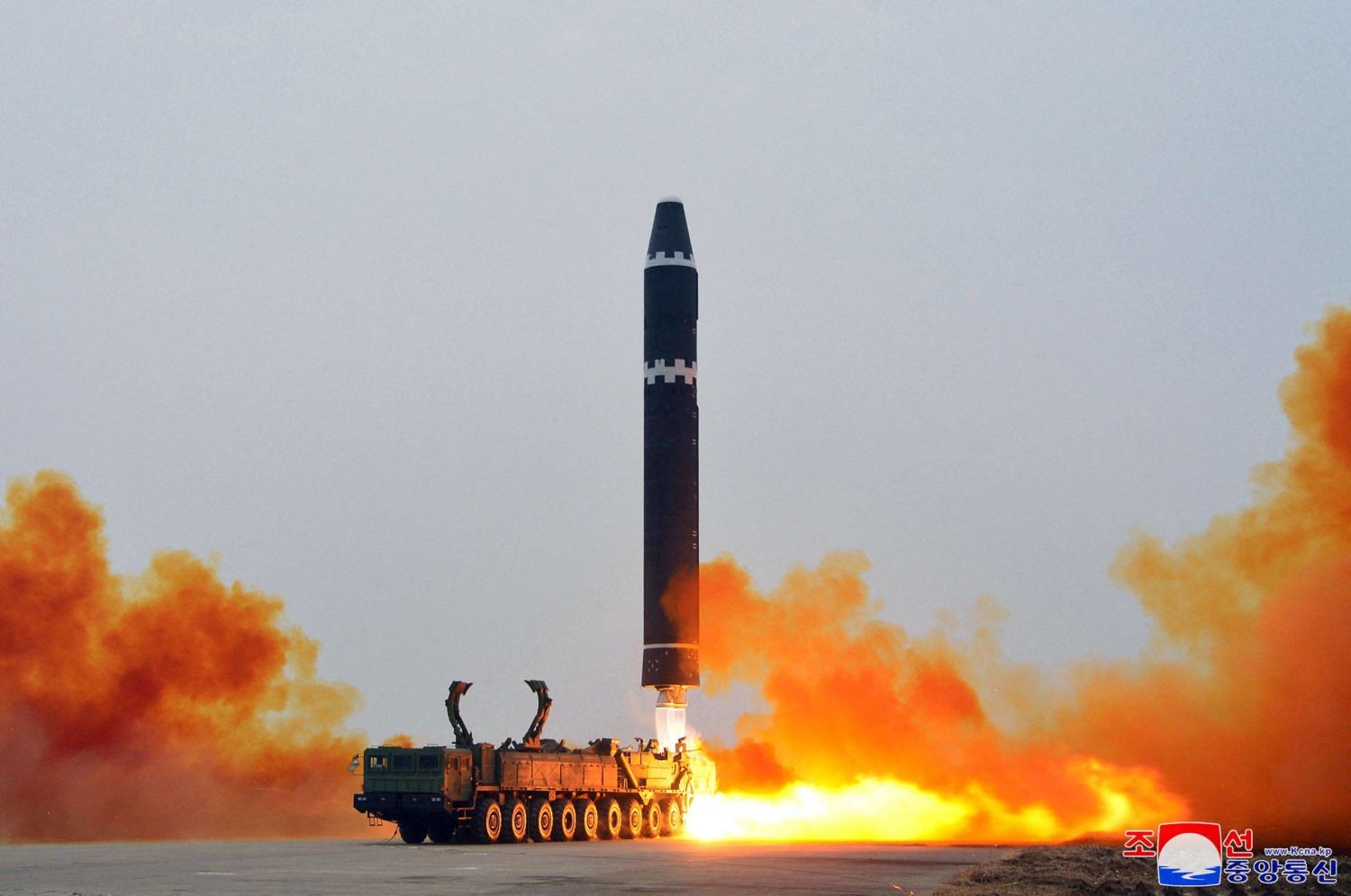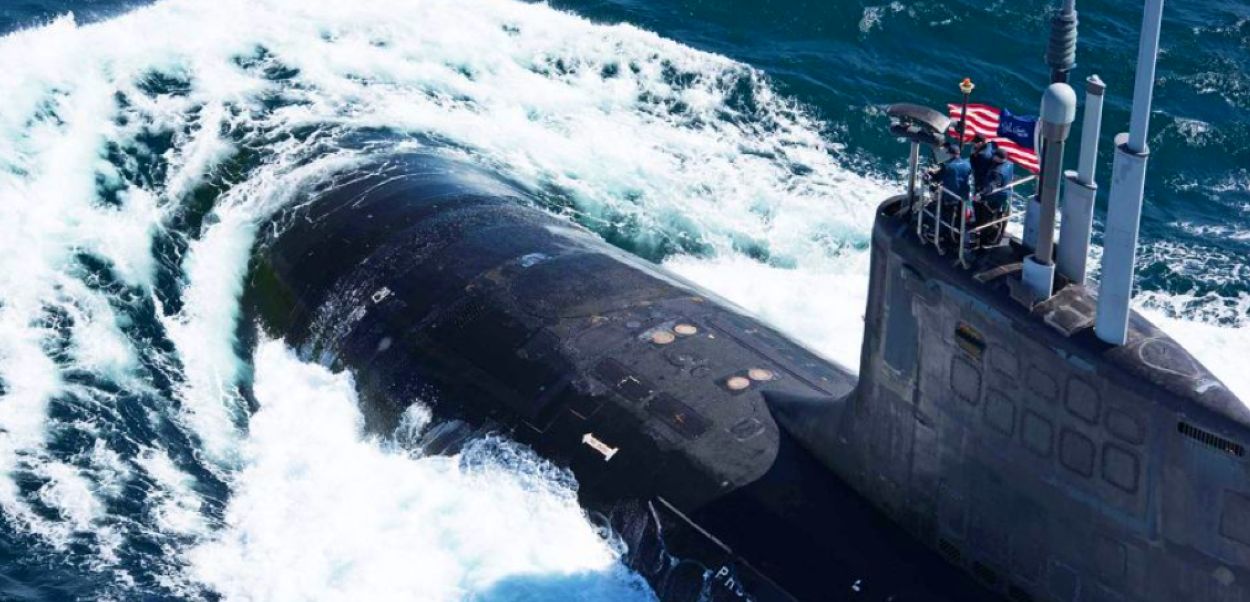Amid global concerns about Russia’s potential use of tactical nuclear weapons in Ukraine, experts have warned that the Korean Peninsula is a more probable location for a nuclear conflict.
In a discussion with EurAsian Times, Shashank S Patel, a geopolitical analyst who keenly monitors trends in East Asia, shared his observations concerning the potential for a nuclear conflict in the Korean peninsula.
Patel stated that the Korean peninsula has been a potential location for nuclear conflict among major regional powers since World War II. This situation continues to the present day.
Apart from the “legacy issue,” the North Korean leadership has strategic motives that drive their preference for nuclear capabilities.
When questioned about the reasoning underlying his viewpoint, he detailed a range of factors that might potentially lead North Korea to contemplate using nuclear weapons.
Patel explained – the Korean peninsula holds deep symbolic significance as the claimed territory of the ‘Rising Sun’ by Kim Il Sung (the founder of North Korea). Thus, it becomes a crucial objective for Kim Jong Un to reclaim this symbolic gem for the nation.
“Second, it provides immense regional political space and opportunities for the North to align with their neighbors such as China and Russia. This trio itself represents the biggest anti-West bloc in the Eastern hemisphere. Nuke commonality joined them in a thread,” Patel added.
A third point is that possessing nuclear capabilities aimed at South Korea grants North Korea a strategic advantage in East Asia.
He noted, “third, it served as a strategic asset for North Korea in the East Asian region to target their both enemies, i.e., Japan & South Korea, with a single shot. Nuke establishments towards South Korea will further push the South to employ the Camp David agreement, making it a trilateral front. It directly opens doors for North to strategically include their immediate allies in war situations, making it a war of whole East Asia.”
“Fourth, due to the usage of liquid fuels, North’s ICBMs are still not that capable of penetrating West’s anti-missile systems to hit far lands. Technically, bombarding multiple ballistics towards South, guarded by limited THAAD deployment, will suffice some positive results to them,” Patel said.
Another aspect to consider is North Korea’s desire to establish cultural superiority over the South, aiming to position themselves as the true descendants of ‘Hongik Ingan.’ This aspiration fuels their willingness to utilize any means necessary and aligns with Korean cultural beliefs about rightful rule.
However, Patel is not the sole voice suggesting that North Korea might resort to using nuclear weapons against South Korea to realize its strategic aims.
Recently, Markus Garlauskas, who supervised the United States intelligence’s strategic assessment of North Korea from 2014 to 2020 as the national intelligence officer for North Korea on the National Intelligence Council, said there has been a constant tendency to downplay the substantial danger posed by North Korea.
“The danger is, particularly, underestimating its risk calculus, its willingness to provoke, its willingness to engage in limited acts of aggression,” he added.
The ex-intelligence officer highlighted that North Korea’s growing confidence in its capabilities and deterrence, supported by China and Russia, is altering its strategic calculations.
This shift increases the likelihood of escalated tensions leading to a full-blown conflict on the Korean Peninsula. Once engaged in such a conflict, there’s a tangible risk that North Korea might opt for a limited nuclear strike rather than facing defeat.

Garlauskas also contended that if North Korea views a change in China’s position as abandonment or hostility, this could additionally catalyze North Korea to consider using a nuclear weapon.
While the primary attention of the US military is directed towards two significant nuclear rivals, namely Russia and China, the emergence of a third nuclear-capable nation, North Korea, introduces a new dimension to the situation.
Despite the smaller size of North Korea’s nuclear weapons arsenal, the factors influencing its decision to use these weapons are notably distinct from those guiding Russia and China.
There is a possibility that a confrontation involving North Korea could extend to China, or conversely, a conflict between the US and China could potentially broaden into a regional crisis on the Korean Peninsula.
However, South Korea’s economic success and power compared to North Korea make any conflict a battle for the latter’s regime survival, increasing the incentive for early limited nuclear use.
Nuclear Tensions In The Korean Peninsula
Irrespective of whether it receives formal international recognition, the consensus among many experts is that North Korea has successfully achieved the status of a nuclear-armed state.
With an estimated arsenal encompassing dozens of nuclear weapons, the nation has made significant technological advancements, enabling it to effectively deploy these weapons over varying ranges – from short to medium and even to long distances.
Efforts in diplomatic channels have proven ineffective in restraining its nuclear advancements. In the past few years, the United States has taken the lead in numerous initiatives, collaborating with other nations and engaging in one-on-one summit diplomacy, all aimed at persuading successive North Korean leaders to honor the commitment made in 1991 to denuclearize the peninsula.
However, there has been a notable absence of diplomatic interaction with Pyongyang since the unsuccessful summit between Kim Jong Un and former US President Donald Trump in 2019.
On the contrary, the escalation of nuclear tensions on the peninsula is undergoing a rapid and significant acceleration. On the other hand, South Korea is relying heavily on its steadfast alliance with the United States.

In April, the country declared that it had no intention of pursuing an independent nuclear weapons program.
This commitment was part of an accord referred to as the Washington Declaration, which also established a new bilateral nuclear consultation mechanism. This mechanism draws inspiration from frameworks established during the US-European Cold War era.
As part of that agreement, the United States also disclosed its intention to take “more visible” measures on the Korean Peninsula. These measures encompass the routine deployment of US “strategic assets,” which includes heavy bombers and aircraft carriers, along with the routine presence of US nuclear-powered ballistic missile submarines.
However, this scenario has sparked a strong response from North Korea, warning the US against involvement in the area and attributing the escalation of tensions in the Korean Peninsula to American actions.
- Contact the author at ashishmichel(at)gmail.com
- Follow EurAsian Times on Google News




